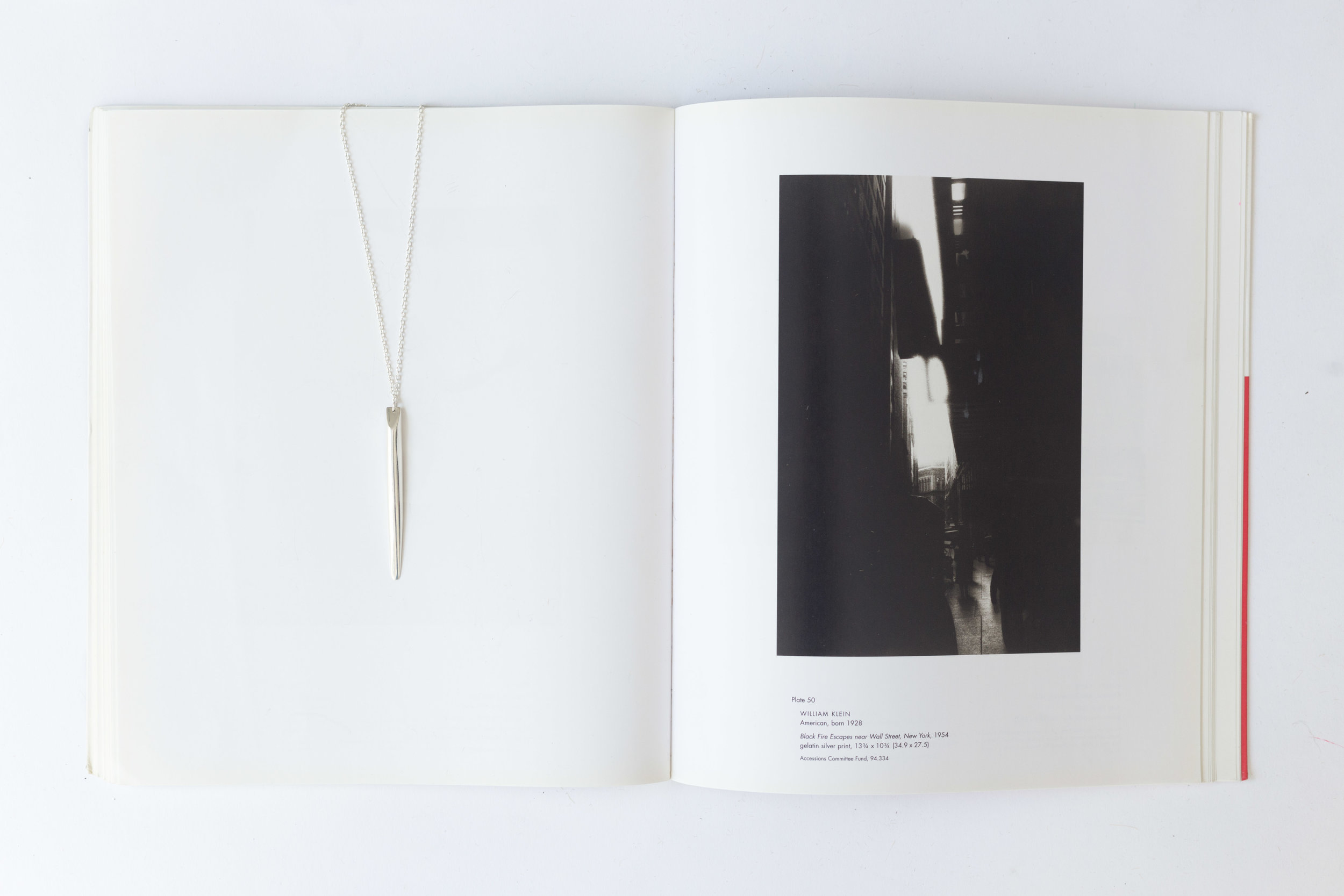Picturing Modernity
THE BOOK + THE JEWELRY | HIGHLIGHTS FROM THE PHOTOGRAPHY COLLECTION OF THE SAN FRANCISCO MUSEUM OF MODERN ART JUXTAPOSE TO HAND MADE SILVER WORKS BY ENDE COLLECTIVE.
Picturing Modernity is a wonderful compendium of photographs capturing the rebellious spirit of transformative photographers from the modern era.
Compiled by then director Douglas Robert of SFMOMA, the book documents the rich collection of images procured early on by the museum, as it was one of the first to recognize photography as an art form.
When thumbing through the cleanly formatted pages of Picturing Modernity, I notice a dual culture of adoption and rebellion in regard to the design principles used by modern artists. A duality that posits some were either firmly with or firmly against the formalities of fine art. Yet, it was those that broke free from classical frameworks to change art as we know it today. But how? Through process and subject matter, Modern artists were able to deconstruct the confines of fine art and encourage us to question what art ought to 'look like' by facilitating new ways for art to 'feel' different.
For example, below and on the left is Andy Warhol's clean-white Plate 57, which is pictured with Ende Collective's Valentina's Orbit bangles. This unsettling work is quite literally just an overexposed gelatin print on silver - a big white metal square! It was presented to viewers by Warhol as an atonement of simplicity and rebellion, which at the time drew a sense of unease from the art community. While others squirmed, many artists and critics applauded his gumption to influence new thinking and work.
Through Plate 57, Warhol signaled a message which liberated artists from classical aesthetics and questioned expectations held by both artists and critics alike. But could it have also signaled to viewers a more liberated observational approach too? Years after the release of Plate 57 Kenya Hara, the founder of Muji, said that "Emptiness - irrespective of who uses it or how - is the pursuit of ultimate freedom." Perhaps it was the elements of emptiness and minimalism found in modern art that, like the artist, liberated viewers too!




